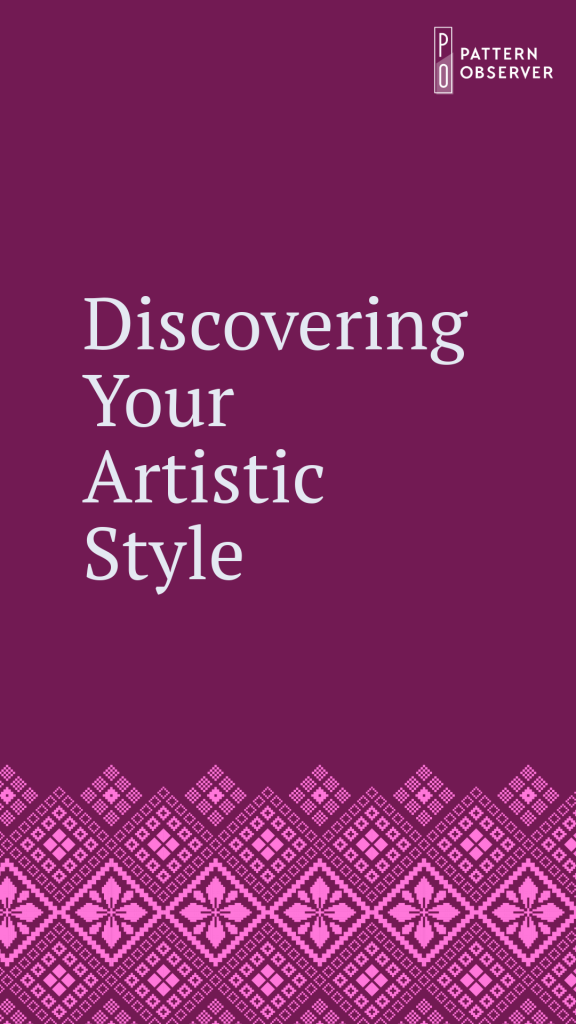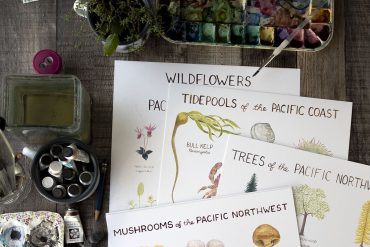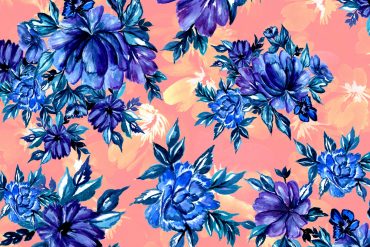Is your artistic style varied? Do you feel like a design chameleon, switching between aesthetics, such as painterly florals and illustrated characters? Many designers feel pressured to find one signature style and create a distinct brand. This approach can work and is wonderful for licensing opportunities. But what if you enjoy exploring different artistic styles, such as bold, textural patterns and soft, painterly designs? Read on to learn more…
Table of Contents:
- Defining Your Artistic Style
- Developing Your Artistic Style
- Defining and Focusing Your Brand with Diverse Artistic Styles
- Conclusion
Defining Your Artistic Style
A single, recognizable style can be helpful when marketing your work, but it’s not essential. Some designers thrive in creating patterns in various styles. They might enjoy creating sophisticated patterns for home decor one week and whimsical patterns for childrenswear the following week.
Embracing the Design Chameleon
While designing in many different styles has gotten a bad rap in today’s online teaching ecosystem, being a design chameleon means you can easily adapt your style to projects and clients. This flexibility is a major asset, broadening your appeal and opening yourself up to more clients and revenue.
Adaptability also prevents creative burnout. Many well-known artists have shifted their styles over time. Remember to embrace each unique moment and let the muse guide you.
Knowing Your Artistic Limits
Being a versatile designer is valuable, but recognize your limits. Some styles may be difficult or unenjoyable. Perhaps intricate florals are your strength, while geometric patterns are not.
Identifying boundaries saves time. It’s okay to pass on projects outside your comfort zone. I do not enjoy designing t-shirt graphics, so I typically pass these projects along to other designers who excel in these styles.

Developing Your Artistic Style
Unsure of your strengths? There are many techniques for discovering your artistic style. Consider your favorite subjects, preferred mediums like watercolor or gouache, or the desired mood you wish to evoke in your work.
Or, on the other hand, are you feeling overly repetitive? Take steps to diversify subject matter, colors, and patterns while using the same medium to tie your collection together. This focused approach clarifies your expertise for clients. For example, a client might recognize you for whimsical children’s apparel patterns in various mediums.
If you are feeling overwhelmed, start with the artistic style that comes most naturally to you and then slowly experiment with different artistic styles. Each unique design will attract new clients, build your design skillset, and help you identify which styles you want to avoid in the future!
Experiment with Different Mediums
Exploring mediums is crucial. Try traditional methods like watercolor, gouache, or colored pencils, along with digital tools like Procreate or Illustrator. This broadens your skill set and helps you find preferred methods. Determine how mediums capture specific elements and note their strengths.
Study Different Artists
Study artists from various art movements, like Impressionism with artists like Claude Monet, Camille Pissarro, Alfred Sisley, and Pierre-Auguste Renoir. Examine techniques, color palettes, composition, and subject matter.
Identify appealing artistic styles. Consider why they resonate with you and how they influence your creativity. Explore how they developed their styles.
Practice Regularly
Out of all these recommendations, this is the most important: Practice consistently to refine your artistic style(s). Dedicate time each week to exploring artistic expression through various designs. Consistent practice improves your ability to execute your vision, and you’ll begin to create your “go-to” techniques that work well for your style, brand, and clients.
Mastering artistic styles requires consistent work, training, and feedback.
Presenting Your Diverse Artistic Styles
If you’re a design chameleon, aim for similar volumes in each style or section in your portfolio. Avoid imbalance, such as one watercolor next to many digital illustrations. This organized presentation will create a varied but not scattered or random portfolio.
🌟 Ready to Amplify Your Artistic Style? 🌟
In the Textile Design Lab, we help you refine your style, stay ahead of trends, and showcase your work.
✨ What’s waiting for you:
🎨 Style Lab – Explore your artistic identity with dynamic challenges.
📈 Trend Insights – Stay inspired with the latest design trends.
🚀 Style Amplifier Program – A free, 3-month program exclusive to members to hone your style and gain visibility.
Join a supportive community and unlock your creative potential.














